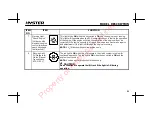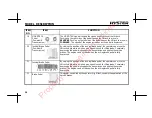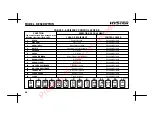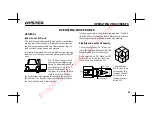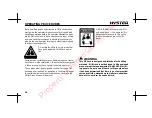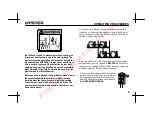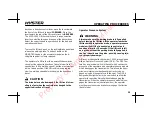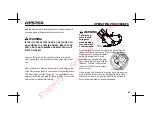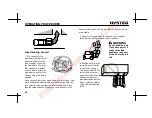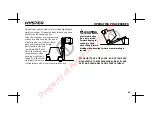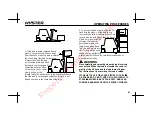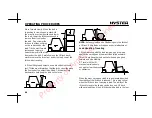
OPERATING PROCEDURES
34
Checks With the Engine Running
FASTEN YOUR SEAT BELT! The seat
belt is installed to help the operator
stay on the truck if the lift truck tips
over. It can only help if it is fastened.
The operator must be aware that the lift
truck can tip over. There is a great risk
that the operator or someone else can be
killed or injured if trapped or hit by the
truck as it tips over. The risk of injury can
be reduced if the operator stays on the
truck. If the truck tips over do not jump off.
The SEAT BELT AND HIP RESTRAINT
BRACKET provide a means to help the
operator keep the head and torso sub-
stantially within the confines of the truck
frame and overhead guard if a tipover oc-
curs. This protection system is intended to
reduce the risk of the head and torso be-
ing trapped between the truck and the
ground, but it can not protect the operator
against all possible injury in a tipover.
Make sure that the area around the lift truck is clear before
starting the engine or making any operational checks. Be
careful when making the checks. If the lift truck is station-
ary during a check, apply the parking brake and put the
transmission in
NEUTRAL
. Proceed carefully.
Check the operation of the following functions as de-
scribed in the MAINTENANCE section.
•
Check the operation of the horn, gauges and indicator
lights.
•
Check the oil level in the powershift transmission when
the direction control lever is in
NEUTRAL
and the en-
gine is running at idle speed.
•
Operate the
LIFT
,
TILT
, and auxiliary functions to check
for the correct operations.
•
Check the operation of the transmission, MONOTROL
pedal or the direction control lever and accelerator ped-
al.
•
Check the operation of the service brakes and parking
brake.
•
Check the operation of the steering system.
Property of American Airlines


